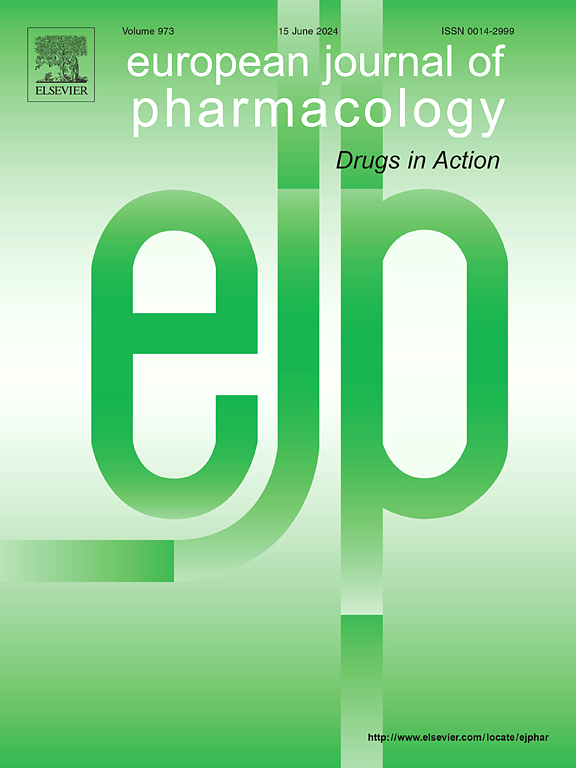可溶性胍基环化酶刺激剂和激活剂:治疗高血压的有前途的药物?
IF 4.2
3区 医学
Q1 PHARMACOLOGY & PHARMACY
引用次数: 0
摘要
一氧化氮(NO)刺激的环鸟苷单磷酸(cGMP)是心血管健康的关键调节剂,因为NO-cGMP信号在肺动脉高压、心力衰竭和慢性肾病等疾病中受损。NO独立的sGC刺激剂和激活剂的发展为恢复改变的NO信号提供了一种新的治疗选择。sGC刺激剂已经被批准用于治疗肺动脉高压(PAH)、慢性血栓栓塞性肺动脉高压(CTEPH)和慢性心力衰竭(HFrEF),而sGC激活剂目前正在CKD的2期临床试验中。通过NO-sGC-cGMP途径增加cGMP的最佳特征效应是血管舒张。然而,迄今为止,还没有一种用于高血压(HTN)的sGC激动剂正在开发中。据世卫组织称,不受控制的HTN的全球流行率继续上升,大大增加了心血管疾病的死亡率。虽然有有效的降压治疗方法,但许多患者需要多种药物治疗,有些患者对所有治疗方法都有耐药性。因此,除了改善诊断和改变生活方式外,新的药理学策略仍有很高的需求。在这篇综述中,我们探讨了sGC刺激剂和激活剂作为新型降压药的潜力,从NO-sGC-cGMP信号传导的概述开始,然后是cGMP增加可能调节血管张力和血压的潜在机制。这些影响可能不仅包括急性血管舒张,还包括中期和慢性影响,如调节盐和水平衡,以及减缓血管老化和重塑。主要部分总结了支持sGC激动剂降血压功效的临床前和临床证据。本文章由计算机程序翻译,如有差异,请以英文原文为准。
Soluble guanylyl cyclase stimulators and activators: Promising drugs for the treatment of hypertension?
Nitric oxide (NO)-stimulated cyclic guanosine monophosphate (cGMP) is a key regulator of cardiovascular health, as NO-cGMP signalling is impaired in diseases like pulmonary hypertension, heart failure and chronic kidney disease. The development of NO-independent sGC stimulators and activators provide a novel therapeutic option to restore altered NO signalling. sGC stimulators have been already approved for the treatment of pulmonary arterial hypertension (PAH), chronic thromboembolic pulmonary hypertension (CTEPH), and chronic heart failure (HFrEF), while sGC activators are currently in phase-2 clinical trials for CKD.
The best characterized effect of increased cGMP via the NO-sGC-cGMP pathway is vasodilation. However, to date, none of the sGC agonists are in development for hypertension (HTN). According to WHO, the global prevalence of uncontrolled HTN continues to rise, contributing significantly to cardiovascular mortality. While there are effective antihypertensive treatments, many patients require multiple drugs, and some remain resistant to all therapies. Thus, in addition to improved diagnosis and lifestyle changes, new pharmacological strategies remain in high demand.
In this review we explore the potential of sGC stimulators and activators as novel antihypertensive agents, starting with the overview of NO-sGC-cGMP signalling, followed by potential mechanisms by which the increase in cGMP may regulate vascular tone and BP. These effects may encompass not only acute vasodilation, but also mid-term and chronic effects, such as the regulation of salt and water balance, as well as mitigation of vascular ageing and remodelling. The main section summarizes the preclinical and clinical evidence supporting the BP-lowering efficacy of sGC agonists.
求助全文
通过发布文献求助,成功后即可免费获取论文全文。
去求助
来源期刊
CiteScore
9.00
自引率
0.00%
发文量
572
审稿时长
34 days
期刊介绍:
The European Journal of Pharmacology publishes research papers covering all aspects of experimental pharmacology with focus on the mechanism of action of structurally identified compounds affecting biological systems.
The scope includes:
Behavioural pharmacology
Neuropharmacology and analgesia
Cardiovascular pharmacology
Pulmonary, gastrointestinal and urogenital pharmacology
Endocrine pharmacology
Immunopharmacology and inflammation
Molecular and cellular pharmacology
Regenerative pharmacology
Biologicals and biotherapeutics
Translational pharmacology
Nutriceutical pharmacology.

 求助内容:
求助内容: 应助结果提醒方式:
应助结果提醒方式:


